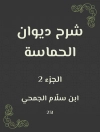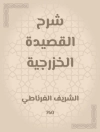In ‘Together, ‘ Robert Herrick presents a compelling tapestry of human connection, delving deeply into the intricacies of relationships through a lyrical and introspective narrative style. The book masterfully intertwines observations of everyday life with profound philosophical insights, reflecting the intricate emotional landscapes that define our interactions. Herrick employs an eloquent use of imagery and rhythm, which not only captures the essence of companionship but also addresses themes of unity and solitude in a rapidly changing world, situating the work within the broader context of 20th-century literature that seeks to explore the nuances of human experience. Robert Herrick, a prominent figure in the American literary canon, draws upon his rich background in both poetry and prose to craft this poignant narrative. His insights into the myriad dynamics of social bonds can be traced back to his own experiences with community and companionship, as well as his keen observations of societal shifts during his lifetime. This lived experience underpins the authenticity of ‘Together, ‘ making it a reflective exploration of interconnectedness. Thus, I wholeheartedly recommend ‘Together’ to readers interested in a profound exploration of relationships. Herrick’s evocative prose invites readers to contemplate their own connections, making it a vital addition to any literary collection seeking to understand the essence of togetherness.
A propos de l’auteur
Robert Herrick (1591–1674) was an esteemed English lyric poet and cleric. Born in Cheapside, London, Herrick became well-known for his collection ‘Hesperides’ which includes his famous carpe diem poem, ‘To the Virgins, to Make Much of Time’. Often embracing the theme of the brevity of life, Herrick’s poetry is characterized by its playful and sensual style, reflecting both classical and English folk traditions. A graduate of Saint John’s College, Cambridge, he took a path less common for poets of his time by actually being ordained as a vicar in Devon’s Dean Prior, where much of his literary work was nurtured. Although ‘Together’ is not among the well-documented works attributed to Herrick, it is possible it could be a lesser-known composition or a work misattributed to him. His oeuvre primarily remains pivotal for the understanding of the Cavalier poetry movement, juxtaposing the mundane with the divine, thus encapsulating the essence of the 17th century’s intertwining of secular and religious life. Herrick’s work is seen as a precursor to the subsequent Neo-Classical and Romantic movements, influencing poets with his thematic explorations of love, time, and nature.












